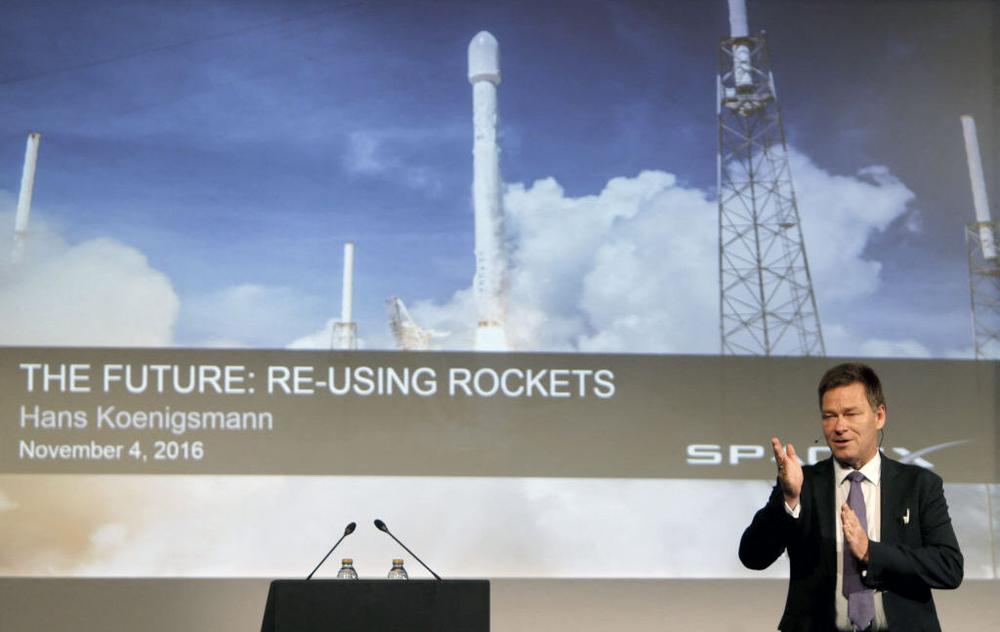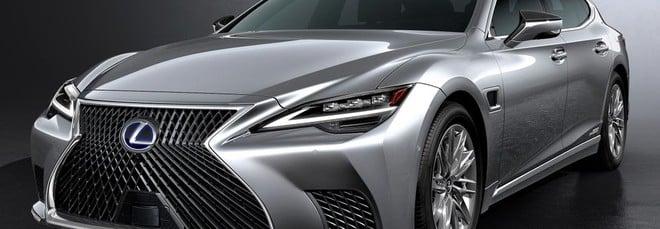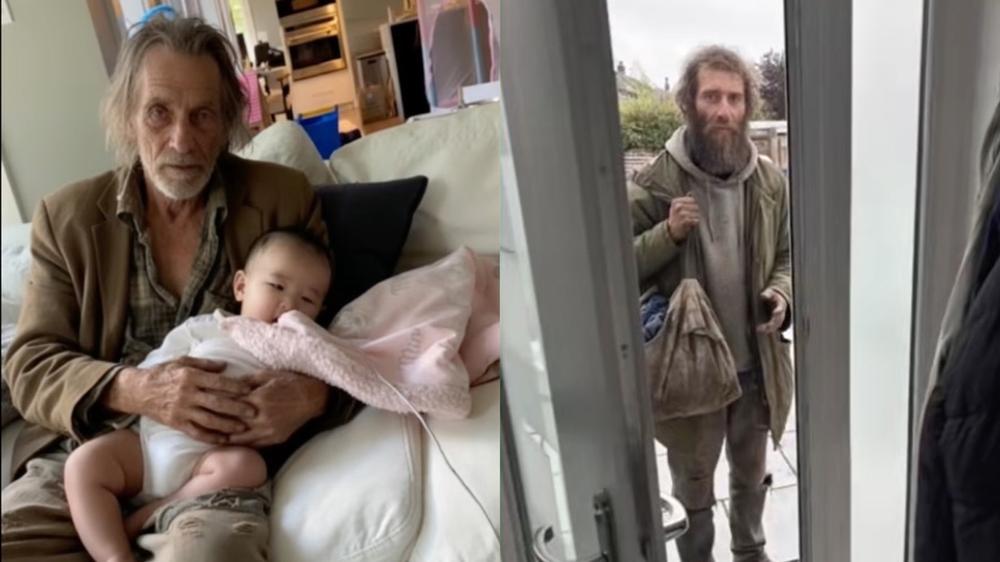Hans Koenigsmann is one of SpaceX's earliest, longest-tenured, and most-revered employees.
When Elon Musk started the company in 2002, he was joined by two other "founding" employees, Tom Mueller in propulsion and Chris Thompson in structures. Koenigsmann was the next hire, brought on to develop avionics for the Falcon 1 rocket.
Koenigsmann remained at the company for two decades before leaving SpaceX in late 2021. During that time, he transitioned from avionics to lead mission assurance and safety while also spearheading every major failure investigation of the Falcon 9 rocket. He was a beloved leader and mentor for his employees within the company's demanding culture.
Because of this experience and his prominence during SpaceX's first crewed flights, Koenigsmann has become one of the most well-known German rocket scientists active today. And now he has announced he is going to space on a future New Shepard suborbital flight alongside his friend Michaela "Michi" Benthaus as early as next month. She's notable in her own right—a mountain biking accident in 2018 left her with a spinal cord injury, but she did not let this derail her from her dream. She will become the first wheelchair user to fly in space.
In the following conversation, Ars speaks with Koenigsmann about how this mission came together and what it's like for a long-time SpaceXer to work with a former competitor, Blue Origin. The conversation has been lightly edited for clarity.
Ars: How did this come about?
Hans Koenigsmann: A few years ago, Michi asked me for some help in finding donations for a parabolic flight. I basically just pointed her at OHB, and they gave her a little donation for the travel costs she had, and it was good. Then I met her again at a drone competition in Munich, where I was invited to be a juror. I was told I could invite friends and family. She and somebody else were the only people who I knew in Munich. So I just invited them, and she came there. And because the drones were kind of lame, we started talking about other things.
Then she kind of asked me, "Do you think I could be an astronaut?" I mean, technically, you don't need your legs, and so on and so forth. When I realized that she meant New Shepard, I said, 'Well, let me talk to people I know.' So I called Audrey Powers (a Blue Origin engineer), and she said she loved the project. In a very subtle and slippery slope, I thought about this and said, "Actually, I think I can do this, too."
The logic, for me, is that it doesn't keep me from flying orbital. I've thought about this for a long time now because obviously I'm a risk person, so all kinds of things go through my head, right? And then there's SpaceX and Blue, and all kinds of things go through my head there, too. So I talked to a lot of people, and there was not a single person who said, "No, you shouldn't do that." Yeah? That doesn't mean that it's right. But I asked people I'm not friends with, too, and they all said, "Well, why not?" So that's how we ended up on this mission together.
Ars: What were your primary concerns about flying yourself? Was it safety? Was it the fact that you worked for SpaceX for 20 years and you were going to fly on Blue Origin?
Hans Koenigsmann: All of the above. I don't know what they did for safety. I know what SpaceX did for safety. So I talked to a few people who worked there. And it all came down to the point that they would all fly on New Shepard. But for me, the ultimate discriminator is if you would let your children fly on it. And later, when we met them, I asked a lot of technical questions on the safety side, and I feel like they answered the majority of them thoughtfully and correctly. So on the safety side, I felt better after a while.
Ars: And the fact that you worked at SpaceX for two decades?
Hans Koenigsmann: On the SpaceX side, I wondered what it would look like for me to fly on Blue. Would it look like I was telling SpaceX to F-off or something like that? I ran this by Gwynne [Shotwell, president and chief operating officer of SpaceX]. She was fine with it. I ran it by other people. There's also another guy at SpaceX who flew on Virgin Galactic (Andy Sadhwani, a SpaceX propulsion engineer). I talked to Andy. And he contributed a lot to this. Because I was thinking, "I really want to go orbital, but this is just a little jump." But Andy said, "No, it was awesome. It was really amazing." So I thought maybe I should be a little bit more open to a hop on this thing. I figured maybe this is just the first step toward an orbital flight.
Ars: Another big difference is that you have to train for months for an orbital mission. But this is like a couple of days, so there's a lot less time commitment.
Hans Koenigsmann: I wouldn't even mind doing that kind of training. For New Shepard, it literally boils down to, like, four or five things that you need to memorize and learn. For me, it was a little bit different because I'm basically in charge of Michi's safety.
Ars: What are you most looking forward to?
Hans Koenigsmann: I've always been interested in experiencing Max Q from the inside. Does it shake you side to side? Or is it just something you fly through so fast you don't even notice it? None of the astronauts I've talked to really had a good report on that. So I want to find this out for myself. I also want to be able to say that I saw that Earth is a sphere. I just want to see the whole thing from above and get an idea of how big it really is in terms of curvature, right? Because you can extrapolate the curvature all the way around, and it gives you a great idea of how small we are and how big the planet is.
Ars: We can't wait to hear all about it when you get back.

 La prossima Lexus LS potrebbe trasformarsi in un inedito minivan elettrico
La prossima Lexus LS potrebbe trasformarsi in un inedito minivan elettrico